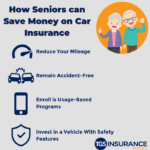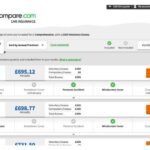Navigating the world of car insurance can feel overwhelming. Different policies cater to various driving habits and needs. This guide will walk you through understanding your unique requirements, comparing policy types, evaluating insurance providers, and exploring discounts. Ultimately, it will empower you to choose the right car insurance policy based on your needs.
From assessing your driving history and typical mileage to understanding the nuances of different coverages like liability, collision, and comprehensive, this resource will provide the knowledge you need to make an informed decision. You’ll learn how to compare quotes, research providers, and find valuable discounts to optimize your insurance costs.
Choosing the Right Car Insurance Policy
Selecting the appropriate car insurance policy is crucial for safeguarding your financial well-being and protecting your vehicle. This comprehensive guide will walk you through the essential steps to find the best coverage for your specific needs.
Understanding Your Needs

Source: comparepolicy.com
A thorough understanding of your driving habits and lifestyle is paramount in choosing the right insurance policy. Factors like your driving frequency, typical routes, and past driving history significantly influence insurance premiums.
-
Driving Habits: Your driving habits, including how often you drive, the types of roads you typically use (e.g., city streets, highways), and the overall distance you travel, directly impact your insurance rates. A frequent driver with a history of aggressive driving will likely have higher premiums compared to a less frequent driver who primarily drives on local roads.
-
Typical Routes: The routes you take regularly can influence your insurance premium. High-risk areas, such as those with a higher incidence of accidents or theft, will often lead to higher premiums. Routes with higher traffic density also potentially contribute to higher risk.
-
Driving History: Your driving history, including any accidents, traffic violations, or claims, plays a significant role in determining your insurance rates. A clean driving record will generally result in lower premiums.
-
Vehicle Usage: Assessing your typical mileage and the types of vehicles you drive is crucial. A vehicle used for frequent long-distance travel might require different coverage than a car primarily used for commuting. The value of your vehicle is also a factor. Higher-value vehicles usually require higher premiums for comprehensive coverage.
-
Lifestyle Choices: Factors like whether you primarily drive during weekdays for commuting or primarily drive on weekends for leisure activities can affect your insurance costs. Weekend drivers might have lower premiums compared to drivers who use their vehicles for extensive daily commutes.
| Driver Type | Driving Habits | Potential Insurance Needs |
|---|---|---|
| Young Drivers | Often new to driving, with less experience and potentially higher accident rates. | Higher premiums, potentially higher coverage requirements. |
| Senior Citizens | Potentially slower reaction times or reduced visibility. | Potentially higher premiums if driving history suggests higher accident risk. |
| Frequent Travelers | Higher mileage, longer drives. | Potentially higher premiums depending on route and coverage requirements. |
Different Types of Car Insurance Policies
Understanding the various types of car insurance policies and their differences is essential. Different coverages offer varying levels of protection and cost different amounts.
-
Liability Coverage: This policy covers damages you cause to other people’s property or injuries to other people. It is a legally required minimum in most states.
-
Collision Coverage: This policy covers damage to your vehicle in an accident, regardless of who is at fault.
-
Comprehensive Coverage: This policy covers damage to your vehicle from events other than accidents, such as vandalism, theft, or natural disasters.
-
Uninsured/Underinsured Motorist Coverage: This coverage protects you if you are involved in an accident with an uninsured or underinsured driver.














